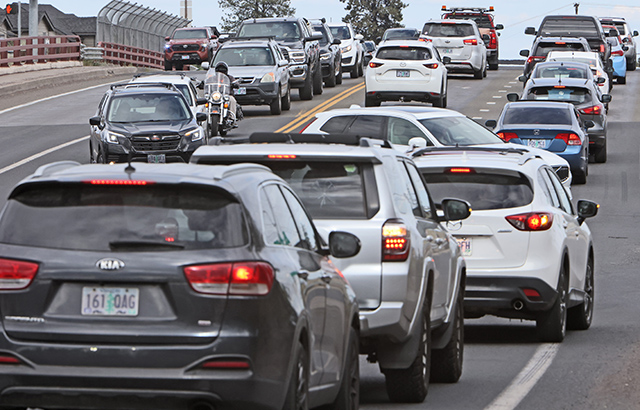How corporate events are going digital
Published 12:00 am Tuesday, September 11, 2018

- Attendees of the thINK conference chat while wearing Klik bracelets, which help people find each other at corporate events, in Boca Raton, Florida, on Thursday. (Scott McIntyre/The New York Times)
The corporate event has gone digital. Paper tickets and itineraries have given way to badge swipes and electronic agendas. Chance meetings have been replaced by automatically curated networking. And there is no need to take notes for colleagues who cannot be there — they can watch a livestream of the event and use their phones to submit questions.
Technology is changing corporate events, and the pace of change is accelerating, according to Brent Turner, a senior vice president at the event marketing agency Cramer. And for better or worse, tracking abilities are a big part of that change.
Trending
Turner’s agency creates events for clients like IBM, German industrial company Siemens and investing giant Fidelity that host a few hundred to more than 10,000 people. Organizers, exhibitors and attendees use technology to wring more value out of the event, he said, whether that is finding new customers, making better professional connections or reaching people outside the event.
Event management software began as simple tools to register, view the agenda and find out who else was attending. But new features are continually being added, said Karen Shackman, whose company, Shackman Associates New York, produces about 150 corporate events a year. A variety of vendors offer organizers the ability to create a custom mobile app that includes ticketing, maps, connections to social media feeds, ways for attendees to connect with speakers and more.
A platform called Splash connects marketing and registration with a company’s customer information database so the sales force can follow up with attendees. Managers using the app can keep track of metrics, like how many attendee names have been added to the list of potential customers.
Rich Tong, director of strategy for the automotive software company Xevo, attended the Consumer Electronics Show in Las Vegas in January. So did 182,000 other people. The most important thing to do each day was plan, Tong said, because at such a large event, “you don’t just ‘run into’ people.” Using the mobile event app, Tong tagged the presentations he wanted to attend, the company booths he wanted to visit and searched the online directory for people he wanted to meet. “The whole process has changed dramatically and for the better,” he said. “It used to be long lines and business cards.”
Susan Stark Schall, a real estate agent who works in the Bay Area for Venture Sotheby’s International Realty, attended a company event last year in Las Vegas with 2,400 others. She said she appreciated the ability to send messages and share photos with other agents there using a mobile app. If a client was looking for a property in another city, “you could post your need and you’d get a lot of responses,” she said. Schall said she also liked the ability in the app to see which classes were full and which ones still had space.
Shackman said technology offerings need to be intuitive. “Boomers, millennials, everyone needs to understand how to use it with a minimum of effort.”
Trending
Some organizers prefer to use social media rather than a special app. Jonathan Meyers, general manager of events at CNBC, said asking people to download and figure out how to use a special phone app for a one-day conference can be a challenge, so he prefers to connect with attendees on the platforms they are already using, like LinkedIn and Facebook.
“We can invite attendees into social media groups to communicate with them and use hashtags for social posts,” he said. He said he has also found that event-specific apps are rarely opened after the event. “It’s easier to continue the conversation,” he said, through groups created using popular social media platforms.
Connections can be as important as content at an event, and networking tools are designed to help attendees find new customers, suppliers or partners. An app called Braindates lets participants share topics they would like to discuss and then meet in person at a Braindates Lounge, where facilitators act as hosts. A recommendation algorithm also offers suggestions of whom to meet. Eventgoers who are using the networking app Klik, and who have agreed to meet, will see their wristbands light up the same color when they are near each other.
Hiver, a startup in London, is one of several companies offering a tracking beacon for event attendees. The Hiver beacons can be attached to a lanyard or placed in a badge holder, and when paired with a phone app, will track who the wearer has interacted with at the event and for how long. Attendees can view the list of interactions they have had and the LinkedIn profiles of the people they have met.
Exhibitors can use attendee beacon data to see who stopped by their booths, how long visitors stayed, on average, and the busiest times. That information can help companies adjust plans for that conference or other events. Other crowd-measuring devices include tracking mats that count how many people step on them and cameras at charging stations.
Organizers can also use beacon data to produce heat maps showing crowd flow through the day. That data helps organizers factor in foot traffic when they price future booth location space.
There could be a downside to such uses, though, said Tong, of Xevo. Privacy and security are issues, he said, “because you don’t want your competitors seeing who you are meeting with.”








